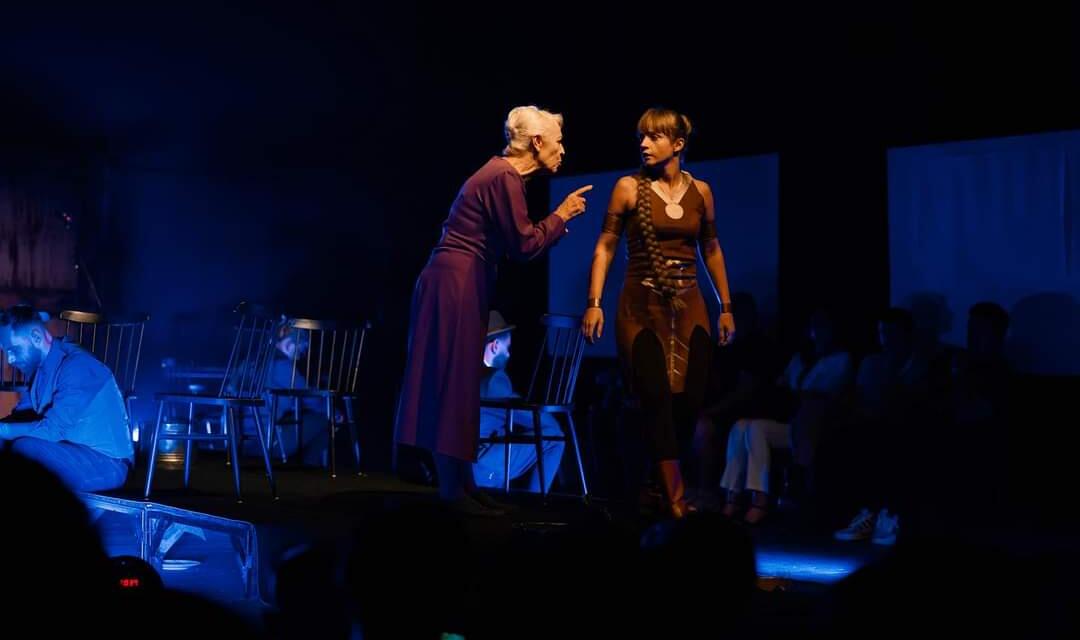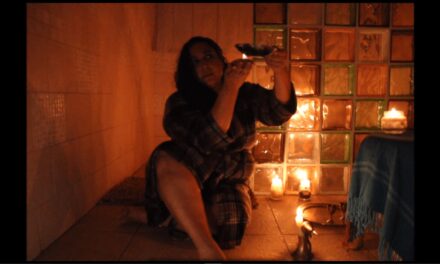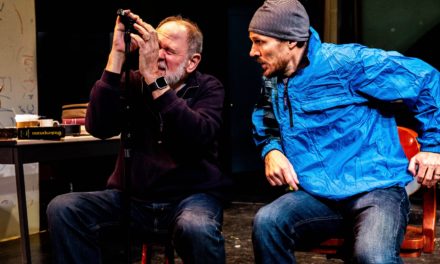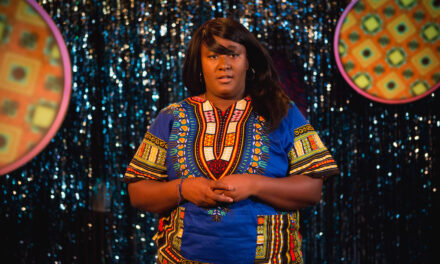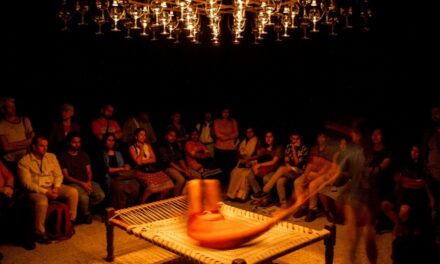A persistent theme in this year’s Kosovo Theatre Showcase has been remembrance. A takeaway from the festival, though simple to state, is that whilst older generations are still processing the aftermath left by a war still young in their memories, the youth might seem to want to forget it. In plays such as Lirak Çelaj’s Arbri, Jeton Neziraj’s Negotiating Peace, and Gadjo, this divide is explicit. It’s perhaps no surprise, then, that Antigones, a version directed by the Artistic Director of Gjilan Theatre, Erson Zymberi, and inspired by Sophocles and Jan Anouilh, should be programmed towards the showcase’s end. Staged in Gjakova, a town hovering on the edges of the border with Albania, it has a distinctly local feel, where the City Theatre’s actors explore both the ritual of remembrance and the consequences of oppressing a society’s need for it. Anouilh originally wrote his version of Antigone during the Nazi occupation of France in a likely thinly veiled criticism of the Vichy regime. Zymberi’s isn’t just a monument to a town’s grief – Gjakova has suffered ethnic violence for centuries, but its last was in 1999, when Serbian police disappeared and massacred the town’s men and boys aged 16 – 60 – but also a stark reminder that Kosovo Albanians are still, twenty years later, seeking justice and the ability to grieve post Serbian war crimes. 1,600 Kosovo citizens are still considered missing as a result of Serbian atrocities. Likewise, in revenge attacks, Serbian citizens were also vanished at the end of the war. How can a country have closure? How can it move forward if it can’t properly remember and honour their dead by burying them?
Another theme running through many of the plays is that of putting on an act, of characters performing a social role in direct contrast to their inner lives. It is a conceit that Anouilh, too, makes use of by having his actors sit on the edge of the stage at the play’s beginning, reminding the audience that they are actors and people first and also serve as bridges between the real and unreal. Zymberi extends this idea by introducing young actress Vlera Dervishi, who plays Antigone, almost as herself – she enters down a spiral staircase through the audience at Gjakova’s art gallery wearing a modern looking long hoodie as if rocking up to a rehearsal. As she grows into her role, she yanks it off to reveal a more traditional Greek costume underneath. The symbolism is clear – the grief that everyday citizens bury in themselves, which extends to the actors who are from this community, eventually has to and will, find expression. King Creon, played by a just as young Besfort Berberi, is also just as childish and emotive and as confused in his role as King towards the law defying Antigone. Patriarchal attitudes towards women are still an issue in Kosovo (as it is anywhere) and it is as if this Creon, having to deal with Antigone’s beligerent confidence in her law breaking, finds himself challenged and on rocky ground. He does not know how to respond. And in the cyclical way that trauma will repeat itself until it is healed, so Antigone and the King repeatedly lock heads over Antigone’s desire to bury her brother against Creon’s wishes. Dervishi as Antigone is so full on from the beginning that it is clear that for her it is a death or death situation. If she buries her brother, she will die for defying Creon. If she doesn’t bury him, she will die to herself anyway. For a moment she is frozen, unable to draw a line, unable to act. What better way to attempt to describe the effect of not being able to bury their loved ones must have on thousands of Kosovo Albanians and Serbs?
There are further parallels that Zymberi makes between the fate of Kosovo Albanians and that of Antigone. The tomb she is buried in is built of bricks with the names of the real men who died in the Gjakova massacre. This was backgrounded at the play’s end by a remarkably poignant tableau – an elderly woman sitting in her modern day living room as if frozen by time and stuck grieving her menfolk, unable to bury them. Prior to watching this show, guests at the showcase visited the house of Ferdonije Qerkezi in Gjakova, whose family was murdered by Serb police. Her house, unchanged since the fateful day her husband and sons disappeared in 1999, is both a museum and a ghostly memorial. Zymberi’s scene is a direct reflection of Qerkezi’s trauma and perhaps of that of thousands of others in the same situation. Perhaps there is also an underlying accusation of an unwillingness to understand trauma that is directed at organisations such as the UN Mission in Kosovo or the EU, who, like Creon, wish people to look to the future and forget the past. The central question the production seems to be asking is, how can there be life in situations like this? Creon, in this production, symbolises the desire for life to move forward from trauma, also symbolized by Antigone’s boozed up sister Ismene. But what of those who can’t move on, such as Antigone, and, in real life, Ferdonije Qerkezi? The production has no answer. It can only offer relief through art and the symbolic burying of Gjakova’s dead.
This post was written by the author in their personal capacity.The opinions expressed in this article are the author’s own and do not reflect the view of The Theatre Times, their staff or collaborators.
This post was written by Verity Healey.
The views expressed here belong to the author and do not necessarily reflect our views and opinions.

